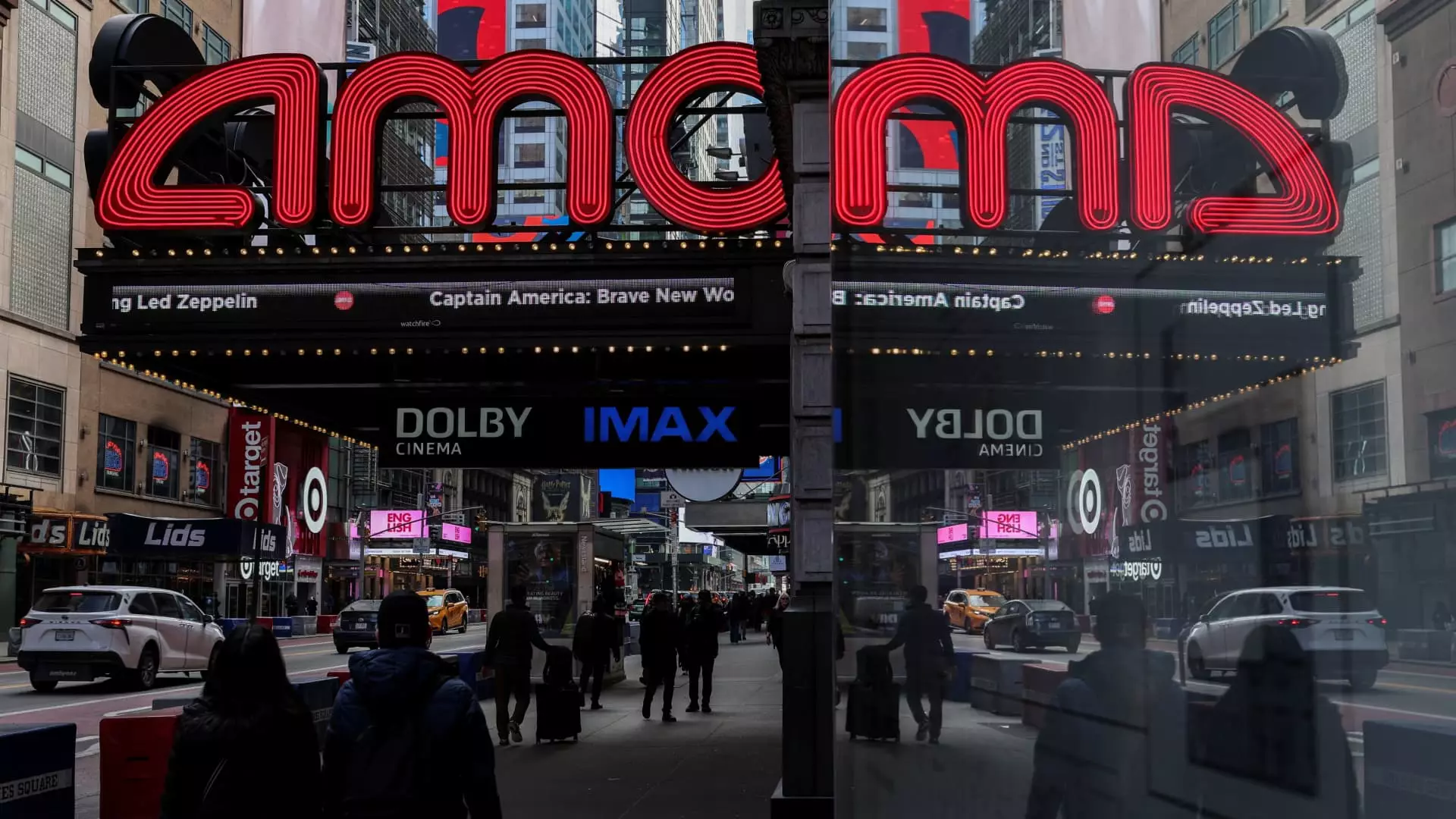In a cinematic landscape brimming with opportunities, AMC Entertainment is meticulously paving the way for an ambitious expansion of its premium screening options. Announcing a plan to roll out an additional 40 Dolby Cinema theaters by the end of 2027, AMC aims to elevate the moviegoing experience significantly. While on the surface this appears progressive, pushing the boundaries of entertainment to new heights, a deeper dive reveals potentially troubling implications about the direction of the film industry and its accessibility to the average viewer.
The ascendance of premium large format screens (PLFs) offers undeniable advantages for those fortunate enough to afford the extravagant ticket prices. AMC’s move is firmly positioned within a broader trend. As highlighted by Kevin Yeaman, president and CEO of Dolby Laboratories, “Premium moviegoing is defining the modern box office.” This sentiment echoes throughout corporate channels where premium experiences are heralded as the future. But at what cost does this future come, and how equitable is it for the average film enthusiast?
Exclusivity vs. Inclusivity
It’s crucial to recognize that as AMC introduces lavish theater experiences—featuring plush seating, enhanced visual fidelity, and ear enthralling sound systems—there lies the risk of alienating segments of the population that cannot afford these premium tickets. With prices inching upwards of $17, the average moviegoer may find themselves priced out of the evolving landscape designed by industry titans who are often disconnected from the realities of everyday audiences.
AMC’s aggressive quest to dominate the premium experience sector is not merely a business maneuver; it signals a concerning trend where cinema’s evolution may favor spectacle over substance. The equation becomes more alarming when considering the myriad major franchises dominating the premium space, such as the Marvel Cinematic Universe and Disney’s ever-expanding portfolio. These franchises undoubtedly draw audiences in droves, but they reinforce a culture that prioritizes blockbuster spectacle over diverse storytelling. If the industry continues pivoting toward premium formats and blockbuster franchises, independent films, and unique narratives may suffer considerably.
The Premium Experience: A Temporary Gimmick?
While the evolution of viewing experiences such as Dolby Cinema, 4DX, and Screen X is nothing short of innovative, one must question whether this is a fleeting trend. Many cinema-goers remember a time when going to the movies was less about paying a premium for a lavish experience and more about the communal thrill of storytelling. It fosters a sense of social belonging, an opportunity for diverse communities to engage with narratives that resonate on an emotional level.
In contrast, PLFs create an overt emphasis on the visual spectacle and technology, often overshadowing content. As Hollywood becomes increasingly engrossed in delivering ‘wow’ moments through technological advances, one may wonder if the very essence of cinema is being compromised. Filmmakers who wish to craft profound narratives might find their stories lost amid loud, visually busy environments designed for titanic action scenes, thus sacrificing creativity on the altar of technology.
A New Era for Theaters
The rapid growth in PLF screens across North America—33% in just five short years—demonstrates a shift in public appetite toward premium-viewing experiences that cater to blockbuster films. However, there exists an inherent risk that audiences may grow accustomed to this premium exclusivity, leading to an expectation that every cinematic experience must be heightened to the extreme. In doing so, AMC and others in the industry run the risk of diluting the authenticity and emotional core that can only emerge from simpler storytelling.
What is particularly concerning is the exacerbation of existing disparities in media consumption. The industry narrative is increasingly stacked against those who can’t afford or access premium formats. The democratization of cinema, a cornerstone of its appeal, is seemingly at odds with a model that prioritizes exclusivity. As more audiences become accustomed to premium theaters, one can’t help but contemplate whether the cinema experience for the masses is slowly slipping away, nurtured by corporations seeking profits over principles.
The loud pageantry of Hollywood’s blockbuster machines may dominate the box office, but losing touch with the emotional connection that films traditionally offer could spell disaster—for audiences and the very fabric of storytelling itself.


Leave a Reply